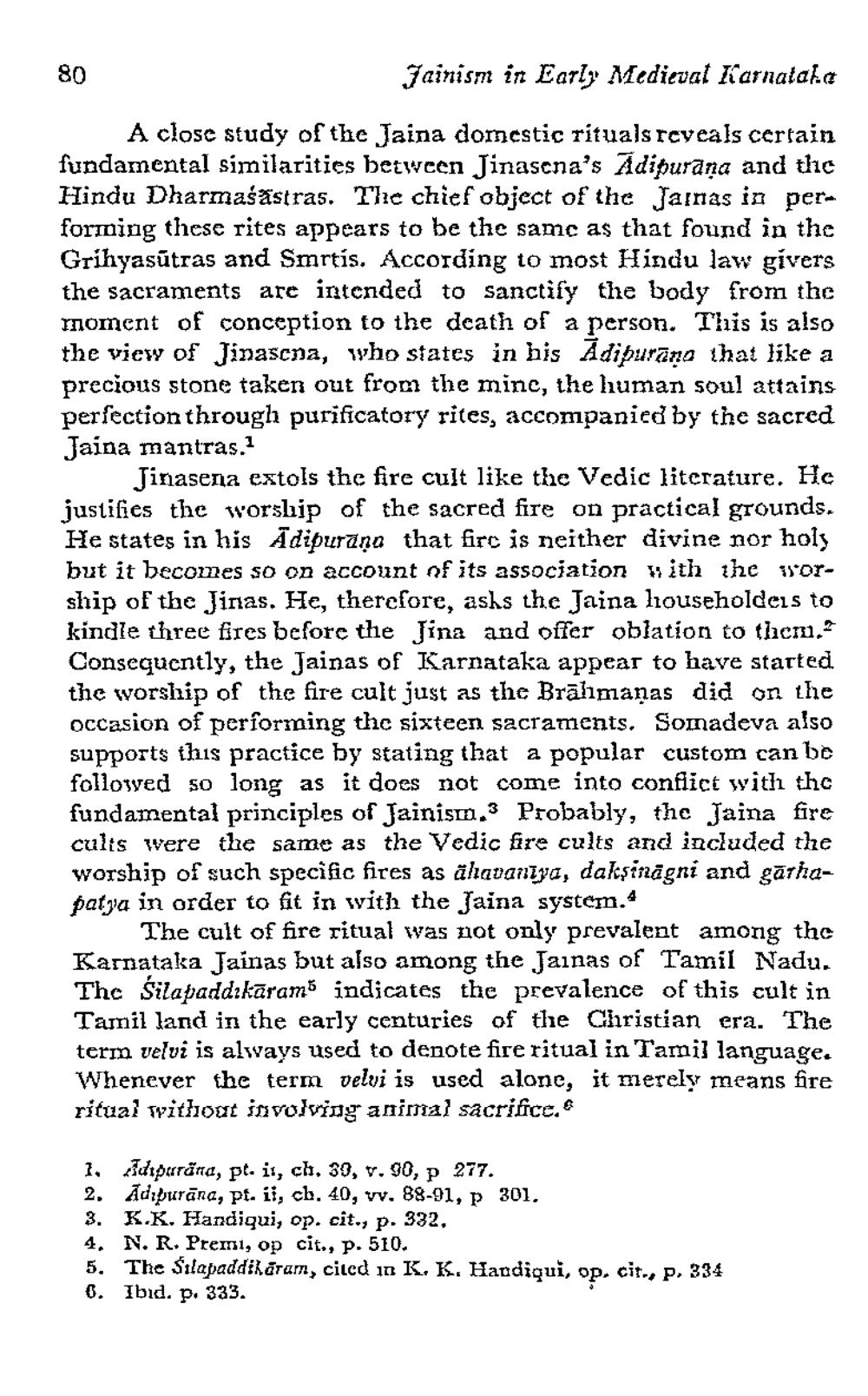________________
Jainism in Early Medieval Karnataka
A close study of the Jaina domestic rituals reveals certain fundamental similarities between Jinasena's Adipurana and the Hindu Dharmasastras. The chief object of the Jamnas in performing these rites appears to be the same as that found in the Gríhyasūtras and Smrtís. According to most Hindu law givers the sacraments are intended to sanctify the body from the moment of conception to the death of a person. This is also the view of Jinasena, who states in his Adipurāṇo that like a precious stone taken out from the mine, the human soul attains perfection through purificatory rites, accompanied by the sacred Jaina mantras.1
80
Jinasena extols the fire cult like the Vedic literature. He justifies the worship of the sacred fire on practical grounds. He states in his Adipurano that fire is neither divine nor holy but it becomes so on account of its association with the worship of the Jinas. He, therefore, asks the Jaina householders to kindle three fires before the Jina and offer oblation to them.2 Consequently, the Jainas of Karnataka appear to have started the worship of the fire cult just as the Brāhmaṇas did on the occasion of performing the sixteen sacraments. Somadeva also supports this practice by stating that a popular custom can be followed so long as it does not come into conflict with the fundamental principles of Jainism.3 Probably, the Jaina fire cults were the same as the Vedic fire cults and included the worship of such specific fires as ähavaniya, dakṣināgni and garhapatya in order to fit in with the Jaina system.*
The cult of fire ritual was not only prevalent among the Karnataka Jainas but also among the Jainas of Tamil Nadu. The Silapaddıkāram indicates the prevalence of this cult in Tamil land in the early centuries of the Christian era. The term velvi is always used to denote fire ritual in Tamil language. Whenever the term velvi is used alone, it merely means fire ritual without involving animal sacrifice.*
1. Adipuräna, pt. it, ch. 39, v. 90, p 277.
2. Adipurana, pt. ii, ch. 40, vv. 88-91, p 301.
3. K.K. Handiqui, op. cit., p. 332.
4. N. R. Premi, op cit., p. 510.
5. The Silapaddikāram, cited in K. K. Handiqui, op. cit., p. 334 6. Ibid. p. 333.




